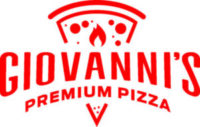Frozen pizza is more than just a convenient meal option; it represents a significant segment of the food industry. The growing popularity of frozen pizza means that manufacturers must prioritize quality control to meet consumer expectations and maintain a competitive edge. Quality control on frozen pizza production is essential for ensuring product consistency, safety, and overall satisfaction. This blog will delve into the importance of quality control on pizza production, its impact on various stages of manufacturing, and strategies for effective implementation.
What is Quality Control?
Quality control (QC) refers to a systematic approach used to ensure that products meet specific standards and specifications. In the food industry, including frozen pizza production, QC involves monitoring and regulating every stage of the manufacturing process to maintain the highest standards of quality. The objective is to identify and correct any deviations from quality standards before products reach consumers.
The Role of Quality Control in Frozen Pizza Production
1. Ingredient Quality
The quality of ingredients is the cornerstone of a high-quality frozen pizza. Quality control on frozen pizza starts with the selection and inspection of raw materials. Key ingredients include:
- Dough: Must be fresh and properly prepared to ensure a consistent crust texture and flavor.
- Sauce: Should be flavorful and free from contaminants or spoilage.
- Cheese: Needs to be of high quality, well-preserved, and capable of melting evenly.
- Toppings: Must be fresh, properly portioned, and free from defects.
Each ingredient undergoes rigorous testing to ensure it meets quality standards. Regular supplier audits and ingredient inspections help prevent the use of substandard or contaminated materials, thereby safeguarding the quality of the final product.
2. Consistency in Product
Consistency is a key expectation for consumers of frozen pizza. Quality control on pizza productions ensures that each pizza maintains the same taste, texture, and appearance. Achieving consistency involves:
- Standardized Recipes: Detailed recipes ensure uniformity in ingredient proportions and preparation methods.
- Controlled Cooking Processes: Precise cooking times and temperatures are crucial for uniform cooking and browning.
- Batch Testing: Samples from each batch are tested to confirm that they meet quality specifications.
By adhering to these practices, manufacturers can deliver a consistent product that meets customer expectations, fostering brand loyalty and repeat purchases.
3. Food Safety
Food safety is paramount in frozen pizza production. Quality control measures are implemented to prevent contamination and ensure that the product is safe for consumption. Key food safety practices include:
- Temperature Monitoring: Ensuring that pizzas are stored and transported at the correct temperatures to prevent bacterial growth.
- Sanitation Procedures: Regular cleaning and sanitizing of equipment and production areas to prevent cross-contamination.
- Hygiene Standards: Ensuring that staff follow proper hygiene practices to maintain a clean production environment.
Compliance with food safety regulations and standards is essential for protecting consumer health and avoiding potential legal issues.
4. Packaging Integrity
The packaging of frozen pizza plays a critical role in preserving its freshness and quality. Quality control in packaging involves:
- Material Inspection: Ensuring that packaging materials are durable and suitable for freezing.
- Sealing: Verifying that packages are properly sealed to prevent air and moisture from compromising the pizza.
- Labeling: Accurate labeling provides consumers with important information, such as nutritional content and expiration dates.
Effective packaging not only extends the shelf life of the pizza but also enhances its visual appeal and consumer trust.
5. Production Efficiency
Efficiency in production processes is another aspect of quality control. By optimizing workflows and minimizing waste, manufacturers can achieve higher production rates and lower costs while maintaining product quality. Key areas of focus include:
- Equipment Maintenance: Regular maintenance of machinery to ensure optimal performance and prevent breakdowns.
- Process Optimization: Streamlining production processes to reduce downtime and improve efficiency.
- Staff Training: Training staff to perform their roles efficiently and adhere to quality control procedures.
By focusing on production efficiency, manufacturers can enhance overall productivity and profitability.
6. Customer Feedback and Continuous Improvement
Quality control is an ongoing process that benefits from continuous feedback and improvement. Manufacturers should actively seek and analyze customer feedback to identify areas for enhancement. This feedback can be gathered through:
- Surveys: Collecting consumer opinions and satisfaction levels.
- Reviews: Monitoring online reviews and ratings for insights into product performance.
- Focus Groups: Engaging with consumers in discussions to understand their preferences and concerns.
Using this feedback, manufacturers can make informed decisions to refine recipes, improve processes, and address any issues that arise.
Benefits of Quality Control in Frozen Pizza Production
1. Enhanced Customer Satisfaction
Effective quality control results in a high-quality product that meets consumer expectations. Consistent taste, texture, and appearance contribute to a positive customer experience, leading to higher satisfaction levels. Satisfied customers are more likely to become repeat buyers and advocates for the brand.
2. Reduced Returns and Complaints
By addressing potential quality issues before the product reaches consumers, manufacturers can reduce the likelihood of returns and complaints. Quality control measures help identify and correct defects early in the production process, minimizing the risk of defective products reaching the market.
3. Compliance with Regulations
The frozen pizza industry is subject to various food safety and quality regulations. Implementing quality control measures ensures compliance with these regulations, helping manufacturers avoid legal issues and potential fines. Adherence to standards also builds trust with consumers and regulatory bodies.
4. Cost Savings
Effective quality control can lead to significant cost savings by reducing waste, rework, and recalls. Identifying and addressing issues early in the production process helps avoid costly mistakes and ensures that resources are used efficiently. This results in lower production costs and improved profitability.
5. Brand Reputation
A strong reputation for quality can set a brand apart in a competitive market. Consistent product quality and adherence to quality control standards enhance a brand’s image and foster customer trust. A positive reputation contributes to long-term success and growth.
Implementing Quality Control in Frozen Pizza Production
1. Establish Clear Standards and Guidelines
To ensure effective quality control, manufacturers must establish clear standards and guidelines for every aspect of production. This includes:
- Ingredient Specifications: Detailed requirements for the quality and safety of ingredients.
- Production Processes: Standardized procedures for dough preparation, sauce application, and cooking.
- Packaging Requirements: Guidelines for packaging materials, sealing, and labeling.
Well-documented procedures help maintain consistency and facilitate training.
2. Invest in Training and Development
Training staff on quality control procedures is crucial for successful implementation. Employees should be knowledgeable about:
- Quality Standards: Understanding the criteria for product quality and safety.
- Inspection Techniques: Learning how to perform inspections and tests effectively.
- Problem-Solving: Developing skills to address and resolve quality issues.
Regular training and development programs help keep the team updated on best practices and industry advancements.
3. Utilize Technology and Automation
Technology and automation can enhance quality control efforts. Advanced equipment and software provide:
- Real-Time Monitoring: Tracking production processes and detecting issues as they occur.
- Data Analysis: Analyzing production data to identify trends and areas for improvement.
- Process Automation: Streamlining repetitive tasks to reduce human error and increase efficiency.
Implementing technology helps improve accuracy, consistency, and overall production quality.
4. Conduct Regular Audits and Inspections
Regular audits and inspections are essential for maintaining quality control. Manufacturers should:
- Perform Routine Checks: Assess compliance with standards and identify areas for improvement.
- Review Procedures: Evaluate the effectiveness of quality control measures and make necessary adjustments.
- Document Findings: Keep detailed records of inspections, audits, and corrective actions.
These audits help ensure that quality control measures are consistently applied and effective.
5. Foster a Culture of Quality
Creating a culture of quality within the organization is vital for the success of quality control efforts. This involves:
- Encouraging Ownership: Motivating employees to take responsibility for product quality.
- Promoting Continuous Improvement: Encouraging a mindset of continuous learning and development.
- Recognizing Achievements: Acknowledging and rewarding employees for their contributions to quality.
Fostering a culture of quality helps embed quality control into every aspect of the production process.
Conclusion
Quality control on frozen pizza production is critical for ensuring product excellence, customer satisfaction, and brand success. By implementing rigorous quality control measures, manufacturers can deliver consistent, safe, and high-quality pizzas that meet consumer expectations. From ingredient sourcing and production processes to packaging and customer feedback, quality control plays a crucial role in every stage of frozen pizza production. Investing in quality control not only enhances product quality but also contributes to a strong brand reputation, customer loyalty, and long-term success in the competitive food industry.

